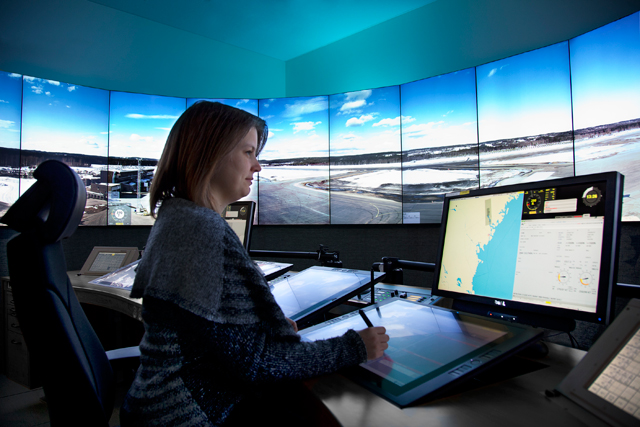Saab, partnered with the Swedish air navigation service provider, LFV, has received final operational approval from the Swedish Transport Agency for the remote operation of Örnsköldsvik airport from Sundsvall, Sweden.
This official certification means that other suitably equipped remote aerodromes, as well as Örnsköldsvik, may be controlled from the remote tower centre (RTC) at Sundsvall. The technology is enabled by installing at the remote aerodrome a mast bearing video cameras providing a 360˚ view, directional microphones and meteorological sensors which feed their data in real time to the Sundsvall RTC. Controllers see the airfield surface environment and sky on wrap-around high-definition screens, backed up by directional sound and all the real-time weather data they would expect in a normal tower.
The advantage, for remote communities connected by infrequent but essential air movements, is that their aerodrome can afford high-quality air traffic services 24h a day if necessary, because they share the fully equipped control room and highly trained duty controllers with other airfields.

LFV
“This achievement means we have a system in place that meets all applicable safety regulations,” says Niclas Gustavsson, director of international affairs and business development at LFV. “With this final regulatory approval, LFV is now making the last preparations to enable remote tower services from Sundsvall, ultimately reducing operating costs and increasing the efficiency of operations.”
Anders Carp, head of Saab’s traffic management business unit, explains that Saab and LFV have adopted a strategy that uses new equipment but still employs the existing approved procedures. “Air navigation service providers and aviation authorities across the globe now have a successful model in place for the regulatory approval process for remotely controlled air traffic services,” he says.
Saab has now entered into a partnership with Virginia SATSLab and the US state’s Leesburg Executive Airport to demonstrate and evaluate Saab remote tower technologies there.
Source: FlightGlobal.com























